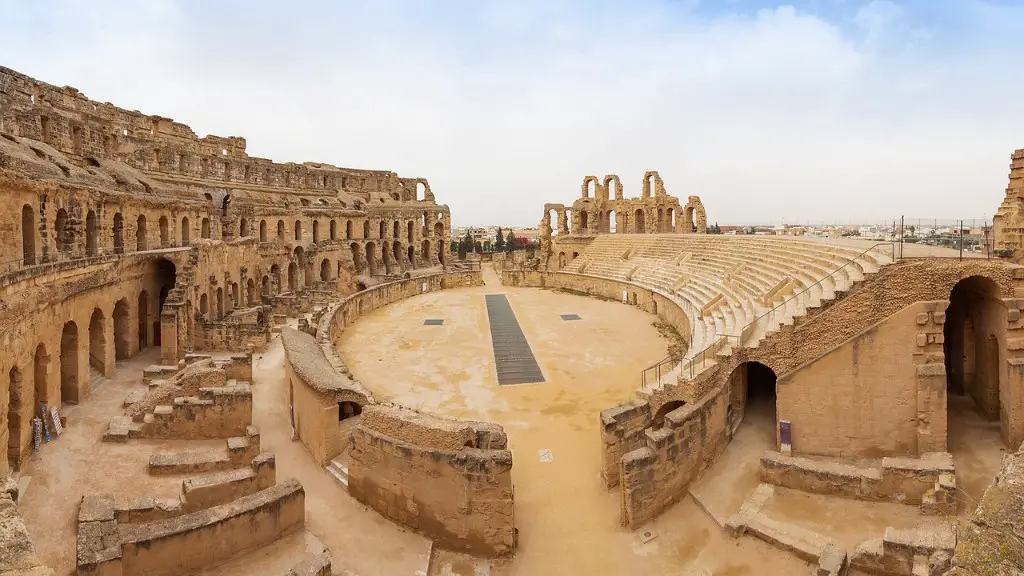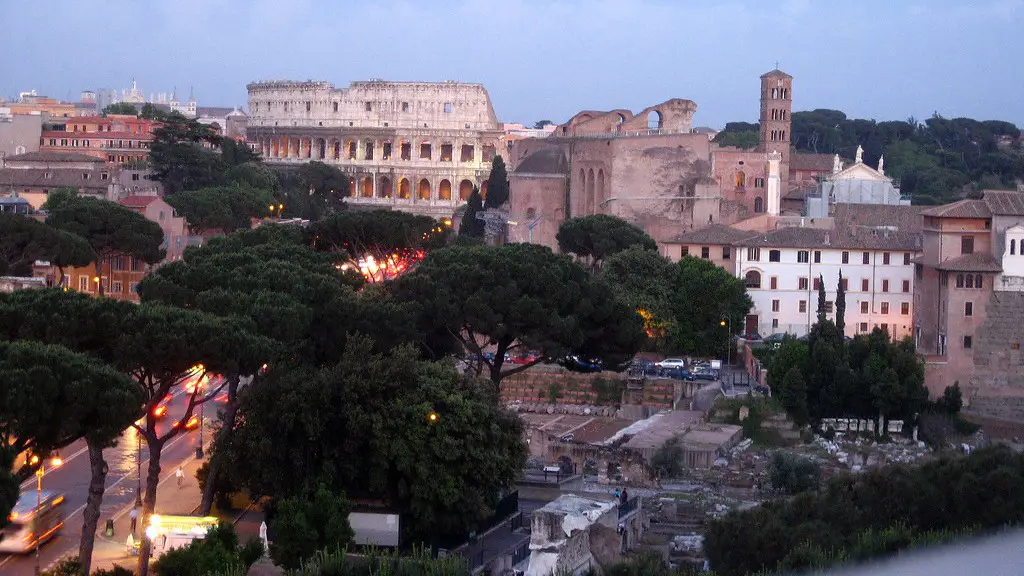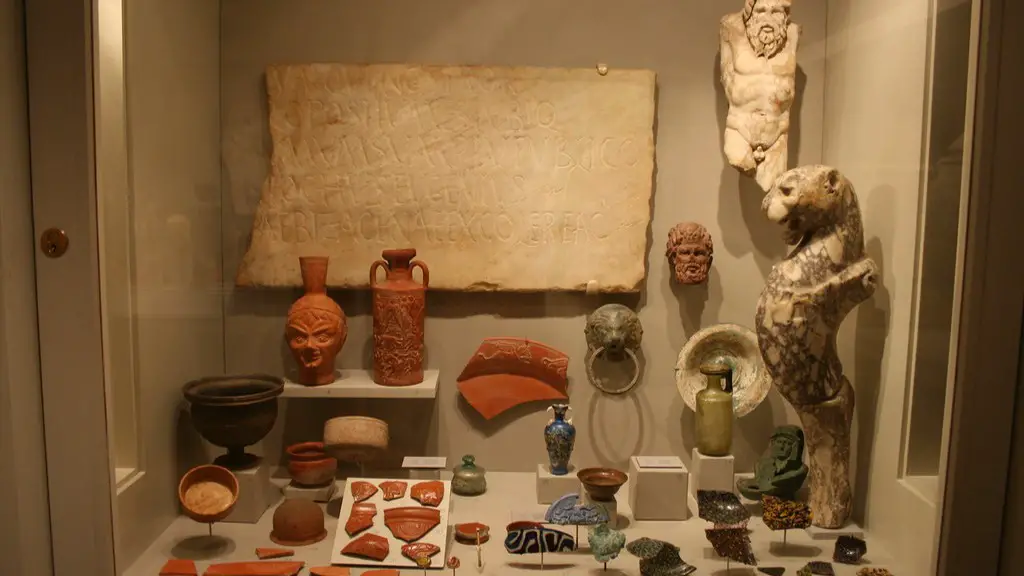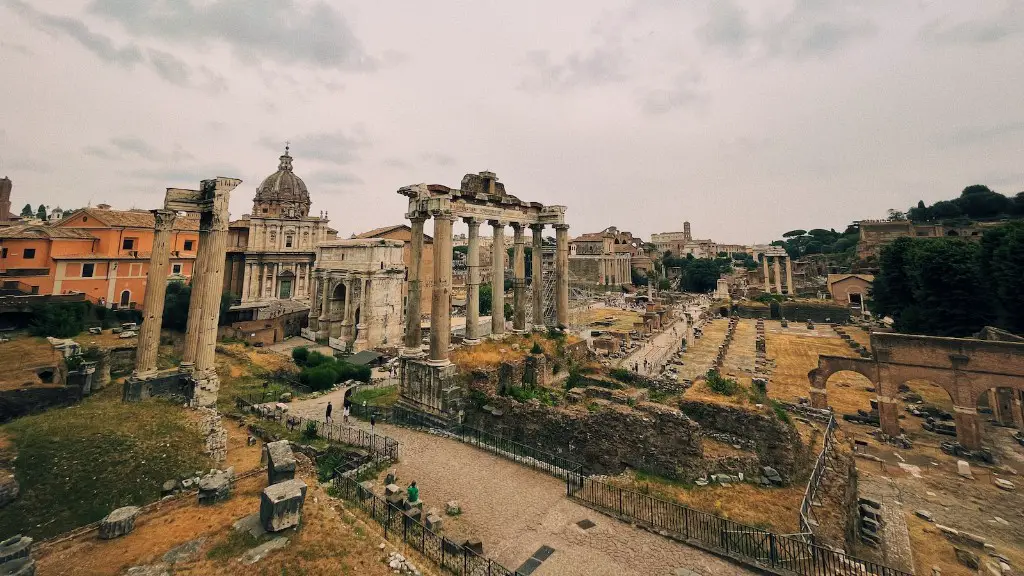Since the founding of Rome in 753 BCE, numerous religions have existed in the city. Religion was an essential part of Roman daily life. The earliest form of Roman religion was animism, which is the belief that everything, including animals, plants, and inanimate objects, has a spirit. This belief stems from the observation of natural phenomena and the interpretation of signs and omens. As Rome became more organized, religion became more structured. The state religion, which developed in response to the needs of the state, included the worship of a pantheon of gods and goddesses. These gods and goddesses were thought to be responsible for various aspects of human life, such as agriculture, war, and love. private religious practices, such as the worship of family deities, also existed alongside the state religion.
The development of religion in ancient Rome is a complex and fascinating topic. Early on, the Roman religion was animistic, meaning that they believed that everything, including inanimate objects, had a spirit. This belief led to the practice of ancestor worship, which was central to Roman religion. The Romans also believed in a pantheon of gods and goddesses who ruled over different aspects of human life. These beliefs were influenced by the Greeks, who had a similar pantheon of gods. As the Roman Empire expanded, they came into contact with other cultures and religions, which led to the development of new beliefs and practices. For example, the Romans adopted the cult of Isis, which was popular in Egypt. This syncretism, or blending of different religious beliefs, is one of the defining characteristics of Roman religion.
How did religion spread in Rome?
The spread of Christianity throughout the Roman Empire was greatly aided by the empire’s political unification and extensive road system. The belief that Christianity was something that anyone could adopt, regardless of regional or religious background, also helped to promote its spread.
Roman religion involved cult worship. Approval from the gods did not depend on a person’s behavior, but on accurate observance of religious rituals. Each god needed an image – usually a statue or relief in stone or bronze – and an altar or temple at which to offer prayers and sacrifices.
When did Roman religion start
The Roman pantheon of gods began to take on their familiar forms in the 6th century BC, during the reign of the Etruscan kings. The three main gods worshipped at the grand temple on the Capitoline Hill were Jupiter (Zeus), Juno (Hera), and Minerva (Athena).
The Edict of Milan was issued in 313 CE by the emperor Constantine and granted Christianity legal status. This was an important development in the history of Christianity, but it did not replace traditional Roman beliefs with Christianity. Christianity continued to grow and develop alongside traditional Roman beliefs, and eventually became the dominant religion in the Roman Empire.
What brought Christianity to Rome?
Constantine was the first Christian emperor of Rome and he played a pivotal role in making Christianity the main religion of the empire. He also founded Constantinople, which became the most powerful city in the world. Under Constantine’s rule, the Roman Empire reached its greatest extent and enjoyed a period of prosperity and stability.
Roman religion involved the worship of many gods and goddesses. Approval from the gods did not depend on a person’s behavior, but on perfectly accurate observance of religious rituals. Each god needed an image – usually a statue or relief in stone or bronze – and an altar or temple at which to offer the prayers and sacrifices.
How was religion treated in the Roman Empire?
To all its subject peoples, Rome granted religious toleration as long as they also honored Roman gods. The Roman religion included many major and minor gods headed by the sky god, Jupiter. In Roman belief, a sort of contract existed between the people and their gods. The people agreed to honor the gods and perform certain rituals, and in return, the gods would protect and bless the people. This system of beliefs helped to cement Roman power, because people from all corners of the empire could come to Rome and worship their own gods while also honoring the Roman gods.
Numa Pompilius was the Sabine second king of Rome and was responsible for negotiating directly with the gods, according to legend. This made him responsible for most of Rome’s religious institutions. He is said to have founded the Vestal Virgins, the living goddesses who tended the goddess’ temple, and the College of Pontiffs, a body of high priests. Numa is also said to have written religious texts, including a treatise on religion and morality called the Dirae.
What was Rome’s first religion
Early forms of the Roman religion were animistic in nature, believing that spirits inhabited everything around them, people included. The first citizens of Rome also believed they were watched over by the spirits of their ancestors. This belief led to the development of the Roman Pantheon, a temple dedicated to all the gods and goddesses, as a way to honor and placate the spirits.
The gods and goddesses of Greek culture significantly influenced the development of Roman deities and mythology. Due to Rome’s geographic position, its citizens experienced frequent contact with the Greek peoples, who had expanded their territories into the Italian peninsula and Sicily. The early Romans adopted many of the beliefs and practices of the Greeks, including the worship of their gods and goddesses. Over time, the Romans developed their own unique pantheon of deities, but the influence of the Greeks can still be seen in Roman mythology.
How did Christianity develop in ancient Rome?
In the 4th century, Emperor Theodosius I made Christianity the official religion of the Roman Empire. This meant that the state recognized the catholic orthodoxy of Nicene Christians in the Great Church as the Empire’s official religion. This edict had far-reaching consequences for the development of Christianity and the role of the Church in society.
Christianity was born in the Roman Empire. Jesus Christ was executed by Roman authorities in Jerusalem, a city in a Roman province. His disciples set about spreading the word of this new religion with remarkable success in the crowded cities of the Empire. The message of Christianity was one of love, forgiveness, and redemption, which resonated with people across the Roman world. Christianity would ultimately come to dominate the Empire, as the Emperor Constantine converted to the faith in the 4th century.
What was the ancient Roman religion called
The Religio Romana was the major religion of Rome in antiquity. The first gods held sacred by the Romans were Jupiter, the highest god, and Mars, the god of war and father of Rome’s twin founders, Romulus and Remus, according to tradition.
People in ancient times believed that the gods could only be placated or pleased through blood sacrifices. They would often go to great lengths, such as building entire temples dedicated to a single god, in order to carry out these rituals. Sheep were a common sacrificial animal because they were seen as being pure and innocent. The Romans believed that the gods would be more likely to listen if they were offered something of value, which is why they would often sacrifice precious items as well.
What were three important influences on Roman religion?
Roman religion was heavily influenced by the Greeks and Etruscans, as well as the Latin tradition. The Romans also incorporated aspects of the religions of the people they conquered, such as the Celtic religion.
Rome was strongly influenced by the cultures of first the Etruscans, and then the Greeks. Hellenization, or, the spread of Greek ideals throughout the ancient world, is thought to have significantly affected Rome around the time of the Second Punic War (218-202 BCE).
Which of the following most influenced Roman religion
The Roman religion was highly influenced by the Greek religion. The Romans made Greek gods as their own, but gave them Roman names. The Romans were more concerned with following the correct rituals than with stories about their gods.
The Romans were polytheistic and their gods were a blend of deities from a variety of cultures, including Etruscan and Greek. Roman gods were very similar to the gods worshipped by the ancient Greeks. The main difference between Roman and Greek gods is that the Romans had a god for everything, while the Greeks had fewer gods.
Warp Up
The Roman religion was polytheistic and developed over time. The early religion was focused on animism, which is the belief that everything, including inanimate objects, has a spirit. This belief led to the worship of nature gods and goddesses. As the Roman civilization developed, so did the religion. The early religion was replaced by the Etruscan religion, which was more focused on serving the needs of the state. This eventually led to the development of the Roman pantheon, which included gods and goddesses that represented different aspects of Roman life.
The development of religion in ancient Rome was a complex and multifaceted process. It was influenced by many factors, including the political and social climate of the time, the influence of other cultures and religions, and the personal beliefs of the people. The result was a unique and rich tapestry of beliefs and practices that continue to influence Rome and the world today.





